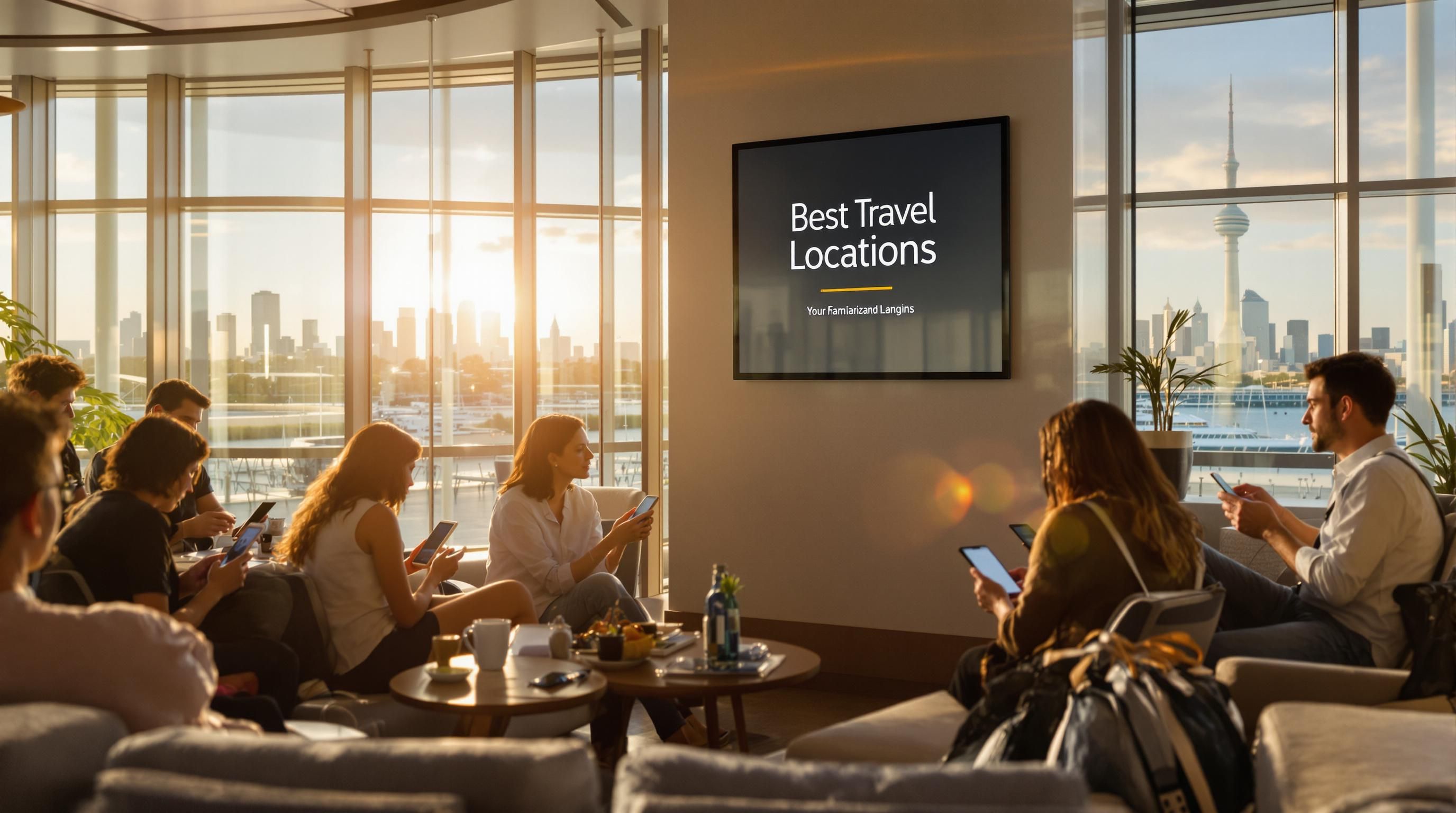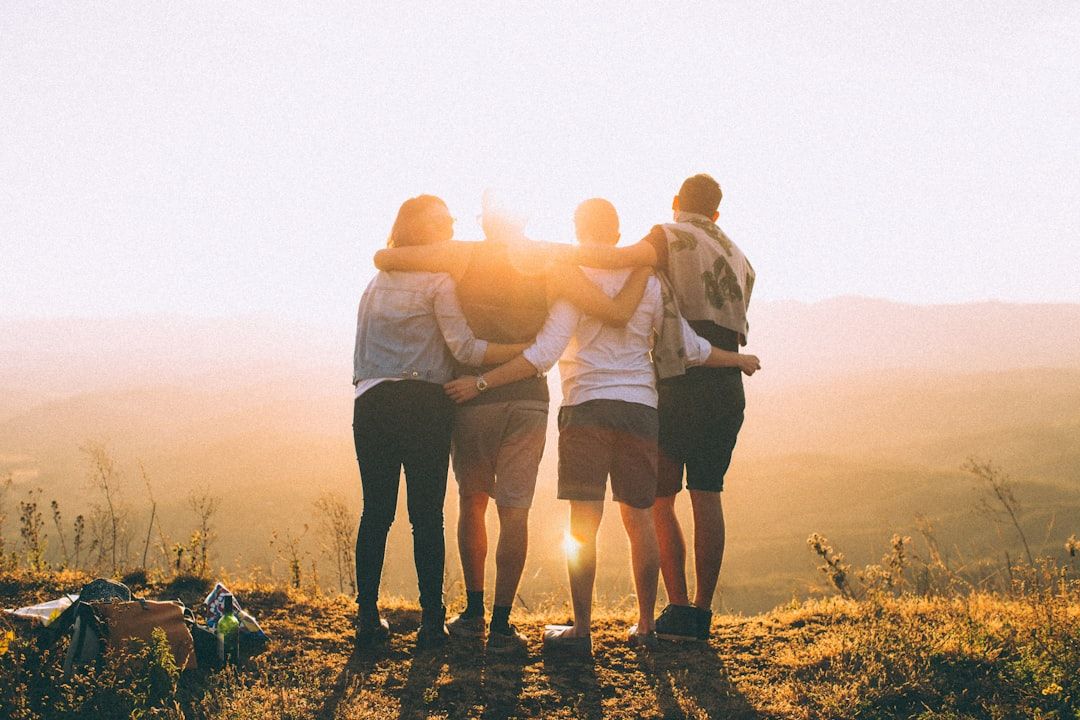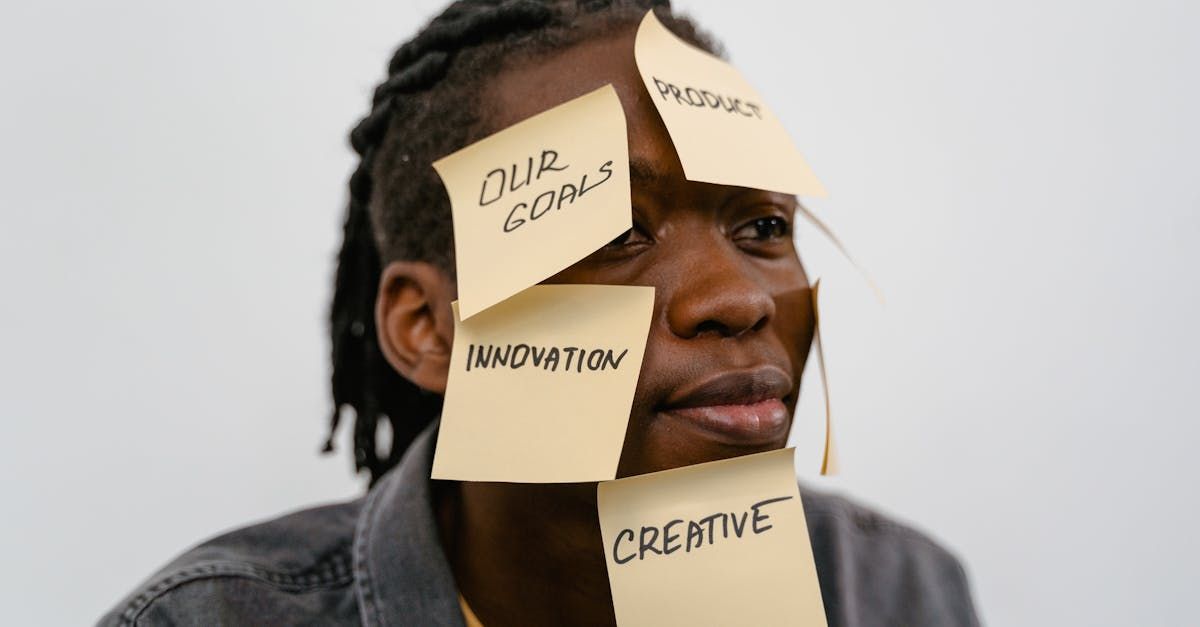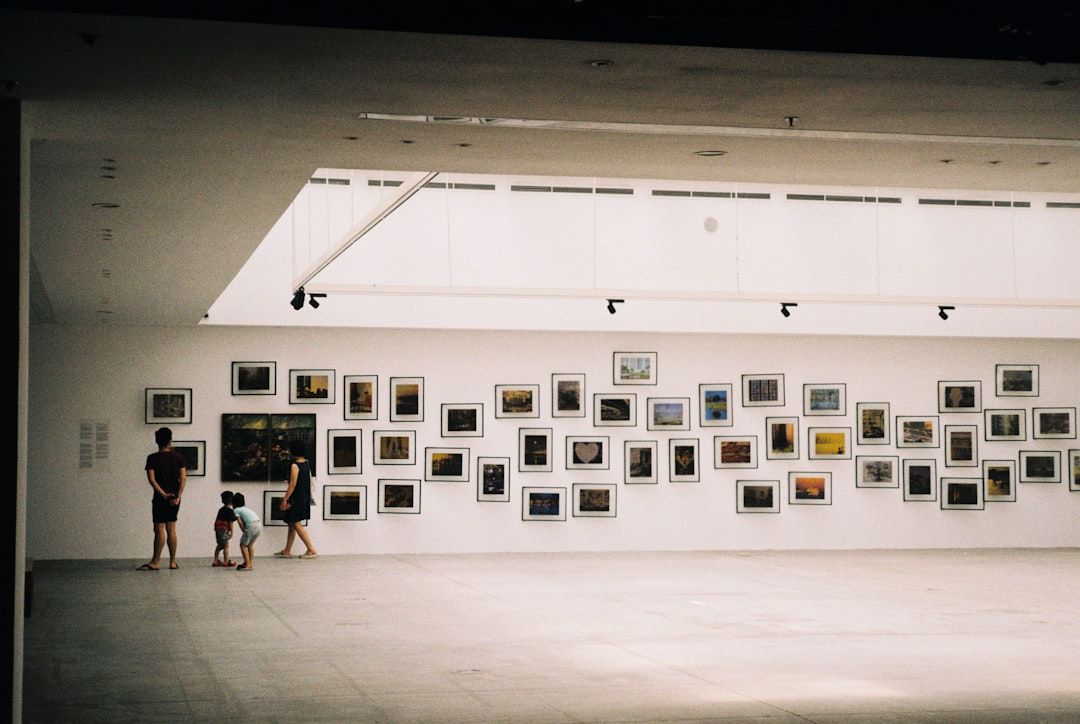Creative professionals are hunting for travel spots that inspire fresh ideas and launch new opportunities. You might think most are flocking to classic art meccas like Paris or Florence. Not this year. Emerging global creative hubs in cities like Boston-Cambridge-Newton are grabbing serious attention, thanks to a surge in contemporary art and cultural institutions. Forget the old familiar routes. 2025 is all about picking locations that don’t just look good on camera but actually supercharge your creative growth and career.
Table of Contents
- Top Trending Destinations For Creatives
- Scenic Spots Perfect For Photographers
- Cultural Locations For Unique Storytelling
- Travel Planning Tips For Creative Teams
Quick Summary
| Takeaway | Explanation |
|---|---|
| Choose destinations for professional growth. | Select locations that offer networking opportunities and career advancement for creative professionals. |
| Focus on narrative-rich cultural sites. | Opt for areas that provide deep historical contexts and human stories for storytelling projects. |
| Plan trips with clear objectives. | Define specific goals for each trip to maximize professional development and creative outcomes. |
| Leverage technology for travel planning. | Utilize digital tools for budgeting and logistics to streamline travel management effectively. |
| Consider emerging global creative hubs. | Explore new locations beyond traditional centers for fresh inspiration and innovation in your work. |
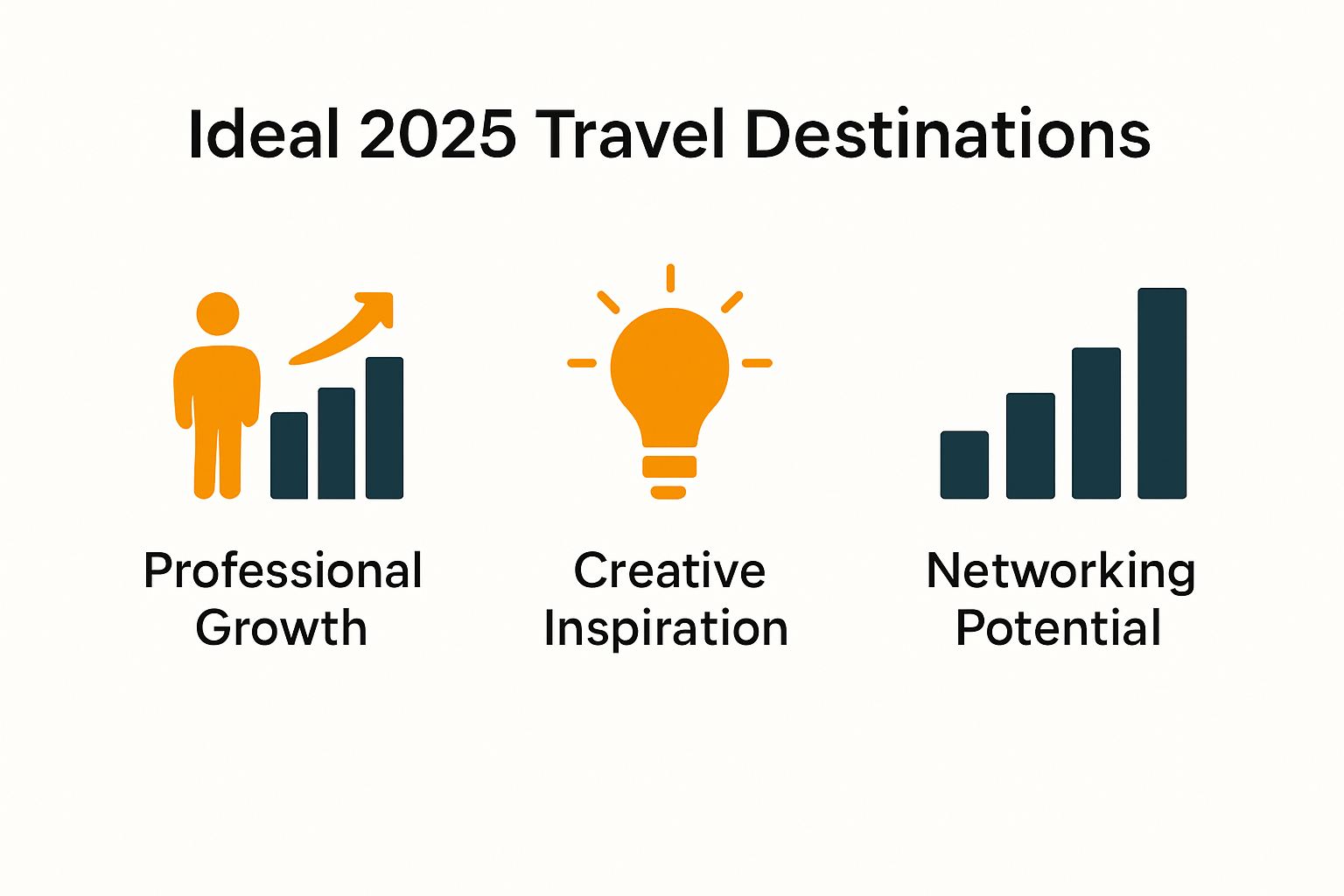
Top Trending Destinations for Creatives
Creative professionals in 2025 are seeking destinations that offer more than just picturesque landscapes. They want environments that inspire innovation, provide professional networking opportunities, and support artistic growth. These locations are not just travel spots but transformative spaces that can reshape a creative’s perspective and career trajectory.
Urban Centers of Creative Excellence
The most compelling destinations for creative professionals blend cultural richness, technological infrastructure, and professional opportunities. Discover innovative portfolio strategies that can complement your travel experiences. According to research from graphic design industry experts, cities like New York, Seattle, San Francisco, Los Angeles, and Chicago stand out as premier destinations for creative talent.
These metropolitan areas offer unique advantages. New York provides unparalleled cultural diversity and arts infrastructure. Seattle connects technology with creativity through its robust tech ecosystem. San Francisco blends innovation with artistic expression, while Los Angeles offers expansive opportunities in entertainment and design industries. Chicago presents a more affordable yet equally vibrant creative environment.
Here is a comparison table summarizing the unique advantages of key urban centers for creative professionals:
| City | Key Advantages |
|---|---|
| New York | Cultural diversity, rich arts infrastructure |
| Seattle | Tech ecosystem, creativity & technology integration |
| San Francisco | Innovation, blend of art and technology |
| Los Angeles | Entertainment & design industries, broad creative opportunities |
| Chicago | Affordable, vibrant, diverse creative environment |
Emerging Global Creative Hubs
Beyond traditional American creative centers, emerging global destinations are attracting creative professionals. The Boston-Cambridge-Newton metropolitan area has gained significant recognition for its contemporary art scene and robust cultural institutions. This region not only offers artistic opportunities but also provides a rich academic environment that stimulates intellectual creativity.
Interestingly, professional opportunities remain the primary factor driving creative migration. A comprehensive survey of AI researchers highlighted that destination selection is increasingly tied to professional growth potential rather than purely aesthetic considerations. Creative professionals are seeking locations that offer not just inspiration but tangible career advancement opportunities.
The ideal destination for a creative professional in 2025 goes beyond geographical beauty. It represents an ecosystem that supports professional development, offers networking opportunities, provides access to cutting-edge technology, and maintains a vibrant cultural atmosphere. Whether you are a photographer, designer, illustrator, or multimedia artist, choosing the right destination can significantly impact your creative journey and professional trajectory.
These destinations are not just places to visit but platforms for transformation, offering creative professionals the chance to expand their horizons, connect with like-minded individuals, and push the boundaries of their artistic expression.
Scenic Spots Perfect for Photographers
Photographers in 2025 are seeking destinations that offer more than traditional postcard landscapes. They want locations that provide unique visual narratives, challenging perspectives, and extraordinary light conditions that transform ordinary scenes into extraordinary visual stories.
Landscapes of Visual Storytelling
The most compelling scenic spots for photographers combine natural beauty with cultural complexity. Learn how to curate your professional portfolio to showcase these unique travel experiences. Professional photographers understand that exceptional locations are about more than scenic views they represent opportunities to capture complex human experiences and environmental narratives.
Some destinations stand out for their photographic potential. Iceland offers surreal landscapes with dramatic volcanic terrains, ethereal northern lights, and stark contrasts between glacial ice and volcanic rock. New Zealand provides diverse ecosystems ranging from verdant rainforests to rugged mountain ranges, allowing photographers to capture dramatic environmental transitions within short distances.
Below is a summary table highlighting top scenic photography destinations and their photographic draws:
| Destination | Notable Photographic Features |
|---|---|
| Iceland | Volcanic terrain, northern lights, stark contrasts |
| New Zealand | Rainforests, mountain ranges, ecosystem diversity |
| Morocco Sahara | Minimalist desert landscapes, dramatic light |
| Jordan Wadi Rum | Red dunes, unique desert light and formations |
| Tokyo | Modern/traditional blend, dynamic urban scenes |
| Singapore | Urban innovation, architectural aesthetics |
Architectural and Urban Photography Havens
Urban environments offer equally compelling photographic opportunities. Cities like Tokyo represent complex visual landscapes where hyper-modern architecture intersects with traditional cultural elements. Singapore provides meticulously designed urban spaces that blend technological innovation with architectural aesthetics, creating compelling visual narratives for photographers.
According to global photography research, photographers are increasingly seeking locations that offer multiple visual dimensions. These destinations are not just about capturing beautiful scenes but about documenting complex environmental and cultural transformations.
Desert regions like Morocco’s Sahara and Jordan’s Wadi Rum offer extraordinary light conditions and minimalist landscapes that challenge traditional photographic conventions. The interplay of light, shadow, and sparse geographical features creates opportunities for photographers to experiment with composition and perspective.
The ideal photographic destination in 2025 transcends traditional scenic beauty. It represents a complex ecosystem of visual storytelling where environmental conditions, cultural dynamics, and technological possibilities converge. Photographers are no longer mere documentarians but visual anthropologists capturing nuanced global narratives.
These locations are not just places to photograph but platforms for visual exploration, offering photographers the chance to push creative boundaries, challenge visual perceptions, and create compelling narratives that reflect our rapidly changing global environment.
Cultural Locations for Unique Storytelling
In 2025, creative professionals are seeking destinations that offer more than surface-level experiences. They want cultural locations that provide deep narrative insights, complex historical contexts, and opportunities to explore profound human stories through their creative work. Learn how to craft compelling brand narratives that can be inspired by these rich cultural environments.
Destinations of Historical Significance
Certain locations emerge as powerful storytelling platforms for creative professionals. According to National Geographic’s travel insights, cities like Atlanta, Georgia, represent profound cultural narrative landscapes. The city stands as a pivotal site in the American civil rights movement, offering creators immersive experiences at locations like Martin Luther King Jr.'s birth home, The King Center, and Ebenezer Baptist Church.
Similarly, the Gullah Geechee Cultural Heritage Corridor in South Carolina provides an extraordinary narrative environment. This region preserves unique African-American cultural traditions, language, and customs, offering creative professionals an opportunity to explore complex historical narratives through storytelling, traditional crafts, and living cultural practices.
The table below summarizes cultural destinations for unique storytelling and the stories they enable creative professionals to explore:
| Location | Unique Storytelling Focus |
|---|---|
| Atlanta, Georgia | Civil rights movement, MLK’s legacy |
| Gullah Geechee Cultural Heritage Corridor, SC | African-American traditions, customs, cultural narrative |
| Detroit, Michigan | Resilience, cultural transformation, musical heritage |
| Motown Museum (Detroit) | Music history, civil rights through music |
| Charles H. Wright Museum (Detroit) | African American history, artistic rebirth |
Urban Cultural Renaissance Zones
Detroit, Michigan, exemplifies a cultural renaissance that attracts creative storytellers. Once known primarily for automotive manufacturing, the city now represents a complex narrative of resilience, cultural transformation, and artistic rebirth. The Motown Museum and Charles H. Wright Museum of African American History offer profound insights into musical and civil rights heritage, providing rich storytelling resources for creators.
These locations are not merely tourist destinations but living archives of human experience. They offer creative professionals deep wells of inspiration, presenting nuanced perspectives on cultural identity, social transformation, and human resilience. Each site represents a chapter in a larger narrative, inviting creators to engage with stories that transcend traditional historical documentation.
The most compelling cultural locations for storytelling in 2025 challenge traditional narrative frameworks. They invite creators to move beyond superficial representations, encouraging deeper explorations of human complexity, cultural intersectionality, and collective memory.
For creative professionals, these destinations are more than travel experiences. They are immersive research environments where personal creativity intersects with broader historical and cultural narratives. Whether through photography, writing, design, or multimedia storytelling, these locations provide raw material for transformative creative work.
Ultimately, the most powerful cultural storytelling locations are those that reveal hidden narratives, challenge existing perspectives, and invite creative professionals to become conduits for complex human experiences. They are not just places to visit but platforms for profound creative exploration and cultural understanding.
Travel Planning Tips for Creative Teams
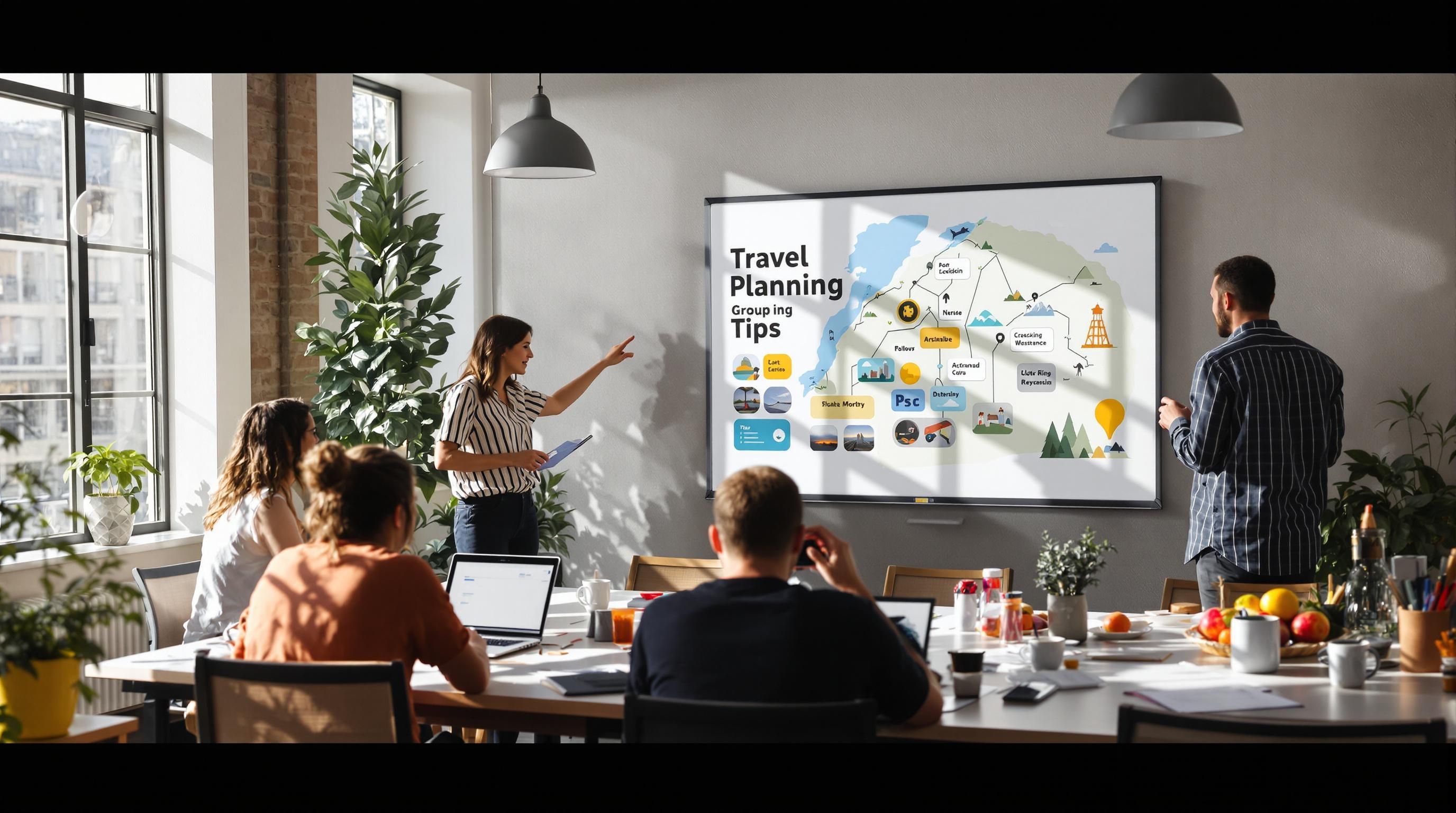
Travel planning for creative teams in 2025 requires a strategic approach that balances professional objectives, creative inspiration, and logistical efficiency. Explore advanced project organization techniques to enhance your team’s travel planning process and maximize collaborative potential.
Strategic Trip Objective Planning
Successful team travel begins with clear goal definition. According to corporate travel management research, establishing precise trip objectives helps creative teams make informed decisions about destination selection, duration, and itinerary design. This approach ensures that travel is not just a logistical exercise but a strategic investment in team creativity and professional development.
Defining trip objectives involves multiple considerations. Are you seeking inspiration for a new project? Planning collaborative workshops? Attending industry conferences? Each objective demands a different travel strategy. Creative teams must align travel plans with specific professional outcomes, transforming traditional travel into a purposeful creative exploration.
Budget and Logistics Management
Financial planning remains crucial for creative team travel. Research from corporate financial experts highlights the importance of early booking and strategic vendor relationships. Booking travel well in advance not only secures better rates but also provides more flexibility in accommodation and transportation choices.
Establishing a dedicated travel coordinator can streamline the entire process. This role involves managing budgets, coordinating logistics, and ensuring compliance with company travel policies. By centralizing travel management, creative teams can focus on their core objectives rather than getting entangled in administrative complexities.
Effective budget management goes beyond mere cost-cutting. It involves creating a comprehensive financial framework that considers direct expenses, potential creative opportunities, and long-term professional development value. Creative teams should view travel as an investment in their collective growth and innovation potential.
Technology plays a significant role in modern travel planning. Digital tools now offer real-time budget tracking, expense management, and collaborative planning platforms. These technologies enable creative teams to make informed decisions, maintain financial transparency, and adapt quickly to changing travel dynamics.
Ultimately, successful travel planning for creative teams in 2025 is about creating holistic experiences that blend professional growth, creative inspiration, and strategic efficiency. It requires a nuanced approach that views travel not as a routine activity but as a dynamic opportunity for team development and collective creativity.
By implementing robust planning strategies, leveraging technology, and maintaining a clear vision of professional objectives, creative teams can transform travel from a logistical challenge into a powerful catalyst for innovation and collaborative excellence.
Frequently Asked Questions
What are the best travel locations for creative professionals in 2025?
In 2025, top destinations for creative professionals include urban centers like New York, Seattle, and Chicago, as well as emerging global hubs like Boston-Cambridge-Newton, offering vibrant cultural scenes and professional networking opportunities.
How can travel help boost creativity for professionals?
Travel exposes creative professionals to new environments, diverse cultures, and unique narratives, fostering inspiration and encouraging new ideas that can enhance their artistic work and professional growth.
What should I consider when planning a trip as a creative professional?
When planning a trip, establish clear objectives such as seeking inspiration for new projects or attending industry events, and manage your budget and logistics effectively to maximize both productivity and creativity during your travel experience.
Why are emerging global creative hubs important for professionals in 2025?
Emerging global creative hubs, like the Boston-Cambridge-Newton area, provide fresh opportunities for networking, artistic collaboration, and career advancement that go beyond traditional art centers, making them ideal for innovative growth.
Transform Your Inspiration Into Impactful Creative Deliveries
Travel ignites new ideas and offers the networking opportunities creative professionals crave, but showcasing and delivering your best work after a trip can feel overwhelming. Many creatives struggle with clunky file transfers or generic folders that do not reflect the quality or brand you worked hard to capture on the road. Pikd solves these challenges by giving photographers, videographers, and creative teams a streamlined way to upload, organize, and share high-resolution visuals right after their journeys. Want to see how seamless creative collaboration can be?

Make your next project stand out. Share your travel-inspired galleries for client review, get feedback in real time, and deliver files beautifully and efficiently, all from one place. Start using Pikd now and turn every creative adventure into a polished, professional client experience.
Recommended
- Best Creative Portfolio Inspiration Ideas for 2025 - Webflow HTML website template
- Remote Work Productivity Tips for Creative Pros in 2025 - Webflow HTML website template
- Top Creative Block Solutions for Visual Teams in 2025 - Webflow HTML website template
- How to Organize Projects: Creative Teams Guide 2025 - Webflow HTML website template
